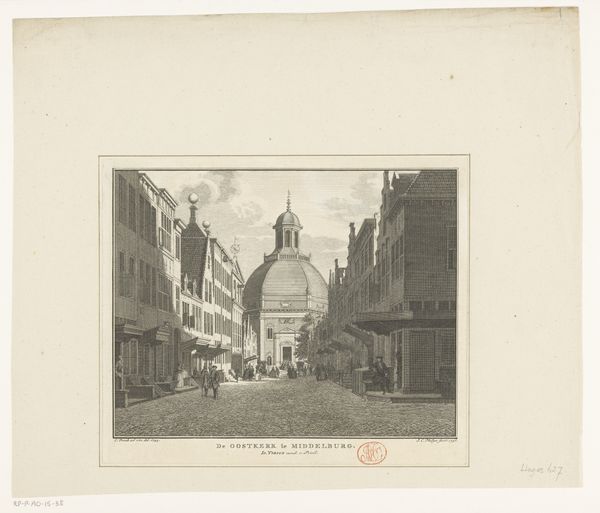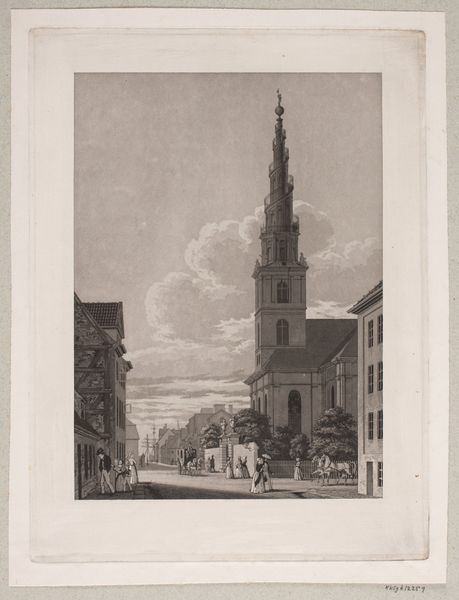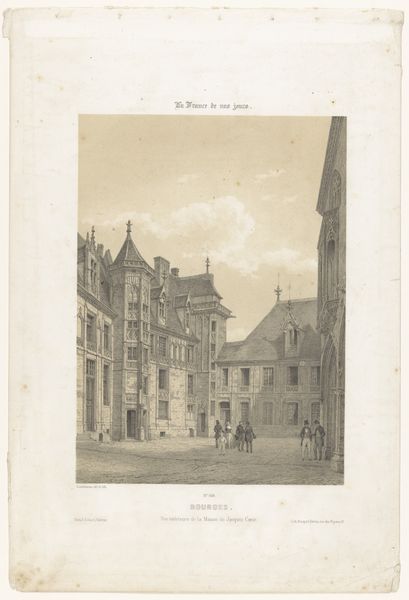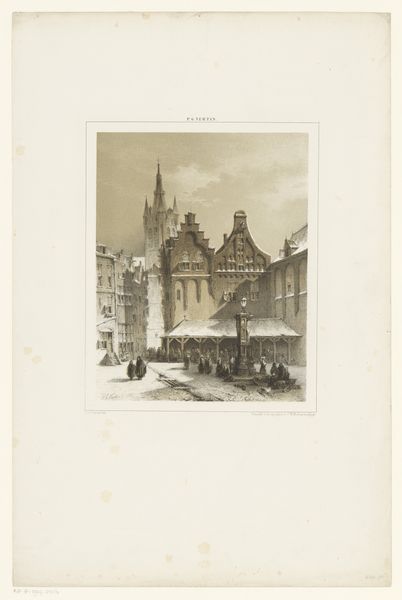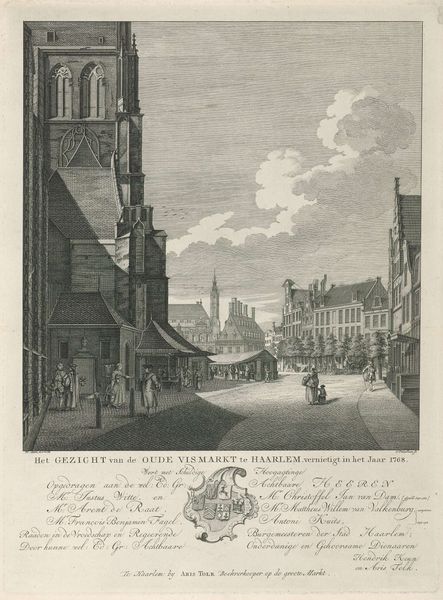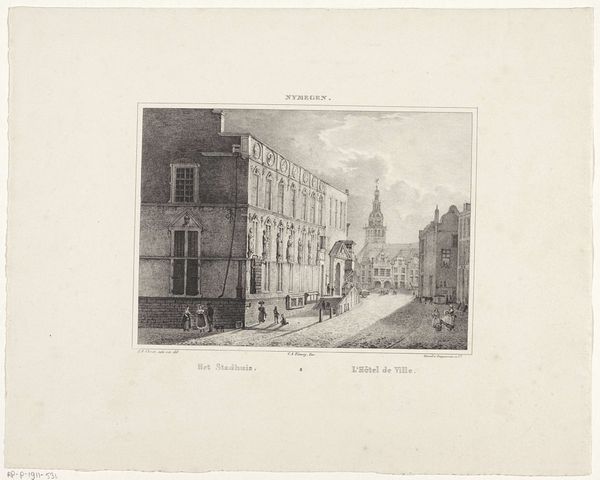
print, etching, engraving, architecture
#
neoclacissism
# print
#
etching
#
old engraving style
#
landscape
#
limited contrast and shading
#
cityscape
#
italian-renaissance
#
engraving
#
architecture
Dimensions: height 215 mm, width 150 mm
Copyright: Rijks Museum: Open Domain
Editor: Here we have Giuseppe Molini’s "View of the Palazzo Vecchio in Florence," an etching and engraving made sometime between 1790 and 1856. It's a rather formal cityscape, with strong perspective drawing the eye to the tower. What historical currents might have shaped this work? Curator: The emphasis on linear perspective and idealized forms definitely aligns it with Neoclassical principles. But look closer. Consider the timing. It was made during a period of intense political and social upheaval following the French Revolution. How might depicting the stability and grandeur of a historic political center like the Palazzo Vecchio be a conscious or unconscious act? A message perhaps? Editor: You mean as a counterpoint to the revolutionary fervor, an assertion of established power? I hadn't thought of it that way. Curator: Precisely! Think about who might have been commissioning or buying such images. Were they members of the established elite, reinforcing their connection to the past and a sense of order? What narrative does this piece construct about Florentine power, and whose interests does it serve? Editor: So the aesthetic choices—the clarity, the symmetry—aren’t just about artistic preference, they're potentially charged with political meaning. It's almost like propaganda in a way, or maybe just a longing for an old system in a time of big shifts and chaos. Curator: It opens up important questions about art's role in society and the power structures it reinforces or challenges, doesn't it? Considering such viewpoints encourages viewers to look beyond surface appearances and analyze the narratives artworks perpetuate. Editor: It really does. Now I want to look at all cityscapes with this framework in mind. Curator: It's about recognizing that art is rarely created in a vacuum; instead, it's deeply entangled with the socio-political context of its time.
Comments
No comments
Be the first to comment and join the conversation on the ultimate creative platform.
